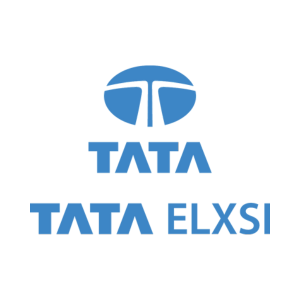In today’s fast-evolving healthcare landscape, medical device regulatory intelligence has become more critical than ever. With multiple markets, ever-changing rules, and complex compliance frameworks, medical device manufacturers need robust strategies to navigate regulatory hurdles and bring products to market swiftly and safely. That’s where medical device regulatory consulting and intelligence platforms come into play. By staying on top of global regulations, conducting thorough market assessments, and understanding best practices, companies can streamline their paths to compliance and gain a competitive advantage.
This article explores the core requirements of medical device regulatory intelligence and offers best practices for leveraging it effectively. We’ll also look at how medical device organizations can harness these insights to ensure smooth market entry and sustained compliance across multiple jurisdictions.
1. Understanding Medical Device Regulatory Intelligence
Simply put, medical device regulatory intelligence refers to the systematic collection, analysis, and dissemination of relevant information about medical device regulations and standards. This includes updates from regulatory authorities, new policy guidelines, enforcement trends, and emerging market access requirements.
- Holistic Approach: Effective regulatory intelligence doesn’t stop at a single region or one particular phase of a device’s lifecycle. Instead, it covers everything from initial device classification to post-market surveillance, encompassing multiple geographies and regulatory frameworks.
- Data-Driven Decisions: Armed with accurate, real-time data, decision-makers can identify market opportunities or address compliance gaps more proactively. This is particularly crucial in industries where regulations are dynamic and the cost of non-compliance can be prohibitive.
Real-World Example: A midsize medical device firm planning to expand its operations from the EU to Asia might use regulatory intelligence to track the latest changes in China’s National Medical Products Administration (NMPA) guidelines. By pinpointing different classification rules for similar device categories, the firm can tailor its documentation and validation tests to meet local standards, avoiding costly rejections or rework.
2. Core Requirements for Effective Regulatory Intelligence
2.1 Timely and Comprehensive Updates
Regulatory changes don’t happen on a neat schedule; they can emerge unexpectedly from various agencies worldwide. An effective medical device regulatory intelligence framework should capture updates from multiple sources—FDA guidance, EU regulations, ISO standards, and country-specific rules—and disseminate them quickly to key stakeholders.
- Automation and Software Tools: Many organizations rely on specialized software to scan official websites, policy databases, and news portals for relevant updates. This automation ensures no critical change goes unnoticed.
2.2 In-Depth Market Assessments
Different markets have distinct rules, ranging from labeling requirements to clinical evaluation protocols. Understanding these nuances forms the backbone of effective medical device regulatory consulting.
- Local Partnerships: Collaborating with local experts or distributors can give manufacturers firsthand insights into regulatory climates. They can also guide on cultural and logistical factors that might impact compliance or launch timelines.
2.3 Risk-Based Approach
The regulatory environment in some markets can be fluid, with new guidelines introduced abruptly. Implementing a risk-based methodology ensures companies prioritize regions and requirements that could significantly impact market access.
- Risk Categorization: Classify potential regulations or updates into “high-risk” and “low-risk” categories. A change in clinical data requirements for high-risk devices, for example, demands immediate attention, while a minor labeling tweak for Class I devices might be a lower priority.
3. The Role of Medical Device Regulatory Consulting
While medical device regulatory intelligence provides the raw materials—data, updates, trends—a strategic consulting approach transforms this information into actionable plans.
3.1 Guidance on Compliance Pathways
Navigating medical device regulations often requires knowledge of multiple frameworks. A seasoned medical device regulatory consulting team can outline possible approval pathways, whether it’s a 510(k) submission in the U.S., CE marking in the EU, or SFDA filing in specific Asian markets.
Example: A startup developing an innovative wound care device could receive expert advice on whether to pursue a De Novo classification in the U.S. or seek a more traditional approval route. Consultants would also help determine if simultaneous submissions in multiple regions make sense, balancing resources with time-to-market goals.
3.2 Tailored Documentation Support
Compliance demands thorough, well-structured technical documents. Regulatory consultants often assist in preparing clinical evaluation reports, risk management files, and labeling content that align with local standards. By tapping into services and software designed for document management, manufacturers can standardize processes and maintain version control across multiple markets.
3.3 Post-Market Surveillance and Updates
Meeting initial compliance requirements isn’t the end. Post-market surveillance (PMS) and vigilance obligations require ongoing vigilance. Consultants can help establish robust PMS systems, track complaint trends, and ensure timely reporting to regulators, preserving market access and patient safety.
4. Best Practices in Leveraging Regulatory Intelligence
4.1 Establish a Centralized Intelligence Platform
Centralizing medical device regulatory intelligence in a single platform helps break down departmental silos. Stakeholders—ranging from R&D and Quality to Marketing and Legal—gain real-time visibility into impending regulations, facilitating more coordinated, strategic responses.
- Dashboard Views: Many intelligence platforms offer customized dashboards to track region-specific changes, high-risk notifications, and compliance deadlines.
- Collaboration Tools: Built-in messaging and version control features streamline cross-functional dialogue, ensuring no important detail slips through the cracks.
4.2 Integrate Intelligence into Product Development Cycles
Too often, regulatory considerations are an afterthought. Incorporating medical device regulatory intelligence into the product lifecycle—from concept and design to clinical evaluation—avoids expensive reworks and accelerates approvals.
- Design Inputs and Verification: Understanding the specific testing or labeling requirements of your target markets early on can shape device design, material selection, and documentation strategies.
- Iterative Risk Assessments: Whenever intelligence highlights a regulatory shift, teams should revisit the risk assessment to gauge potential impacts on device safety, performance, or labeling.
4.3 Foster a Culture of Continuous Learning
Regulatory landscapes evolve—sometimes in ways that are difficult to predict. Encouraging an organizational culture where teams stay curious, engaged, and ready to learn from real-time updates fosters agility and responsiveness.
- Regular Training Sessions: Host quarterly or biannual refresher courses on changing medical device regulations for all relevant personnel.
- Cross-Functional Reviews: Involve multiple departments in regulatory strategy discussions. Marketing might offer insights into local competitor launches, while Quality can detail how changes might affect manufacturing processes.
5. Global Market Access: Expanding Reach through Intelligence
For medical device companies eyeing expansion, medical device regulatory intelligence is a game-changer. By mapping out diverse market entry requirements, organizations can strategically choose which regions to target first, balancing market size against regulatory complexity.
Real-World Example: A major global medical device manufacturer identified an emerging market in Southeast Asia with relatively moderate compliance requirements but substantial demand for its class II orthopedic products. Guided by a strong intelligence setup and medical device regulatory consulting, the firm launched in that region first—gaining valuable revenue and feedback to refine its products. Armed with that data, it tackled more stringent markets in Europe and the U.S.
6. Overcoming Common Challenges
Despite the clear benefits, implementing a robust medical device regulatory intelligence framework comes with its own set of challenges:
- Information Overload: With thousands of regulatory updates circulating globally, filtering relevant data can be overwhelming.
- Language and Localization: Regulations are often published in native languages, requiring skilled translators or local experts to capture nuances.
- Resource Constraints: Smaller companies may struggle to maintain an internal regulatory team capable of tracking multiple jurisdictions simultaneously.
To address these challenges, partnering with specialized medical device regulatory consulting firms or investing in an advanced intelligence platform can offer a cost-effective solution. These partnerships often combine local market expertise with sophisticated software that automates data collection and analysis.
7. Conclusion
In a sector as tightly regulated as healthcare, medical device regulatory intelligence isn’t just a “nice-to-have”; it’s a strategic imperative. Staying current with global medical device regulations, adopting a risk-based approach, and integrating intelligence into every stage of product development can significantly reduce time-to-market and safeguard patient well-being.
By leveraging high-quality data, expert services, and best practices, medical device manufacturers can maintain an edge in a hyper-competitive, increasingly globalized market. Whether through in-house teams or external medical device regulatory consulting, the goal remains the same: ensure compliance, protect patient safety, and achieve robust market access. Companies that succeed in building a proactive, intelligence-driven regulatory framework will be better positioned to innovate confidently and thrive in the face of ever-shifting requirements.







